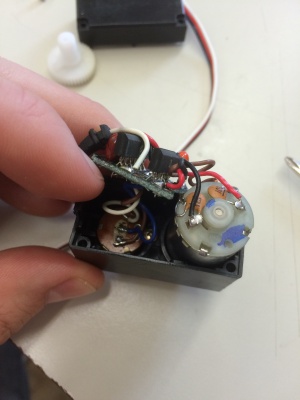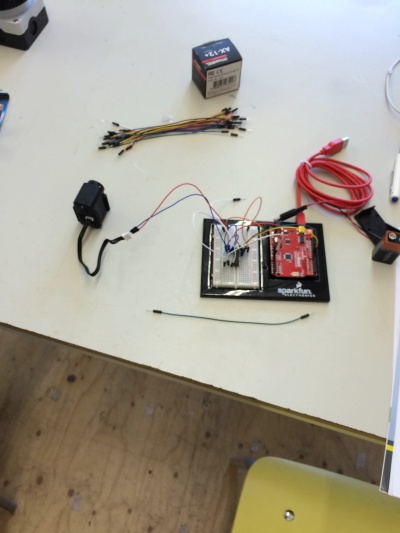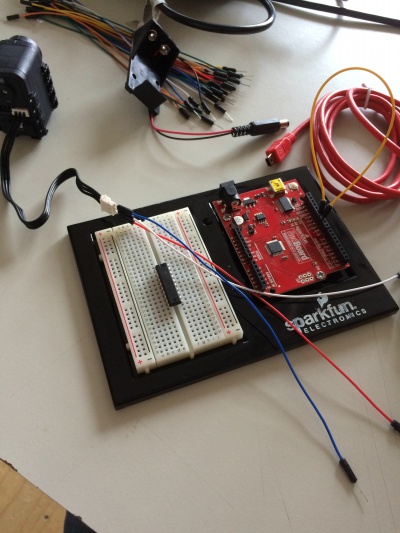Difference between revisions of "Msc2G7:Expert3"
(→6/5 computer, sensor and connection choices) |
(→6/5 computer, sensor and connection choices) |
||
| Line 22: | Line 22: | ||
</div> | </div> | ||
</div><br> | </div><br> | ||
| + | |||
| + | ==Servo testing== | ||
| + | Film1.2.mp4 | ||
== 6/5 computer, sensor and connection choices == | == 6/5 computer, sensor and connection choices == | ||
Revision as of 10:31, 8 June 2015
Motors & Sensors
Servo testing
Film1.2.mp4
6/5 computer, sensor and connection choices
1. One joint with sensor working
Raspberry pi/Arduino control motor with sensor
2. Two (Micro)Computers Communicating
ethernet/bluetooth
3. Advanced control Consensus Algorithm
25/3 Adapt servos

The brown wired element on the right is the potentio meter. That measures the angle of the output axle of the motor. The turning angle of the meter is limited to less than 360 degrees. So that causes a problem when putting any gears on that axle to increase torque. The meter has to be replaced to the good axle of the right measurements.
11/3 Type of Motor Decisions
Based on some requirements for the motor, the decision was made to use a Servo Motor, instead of a Stepper Motor or a DC Motor.
The requirements were the following:
- The position controllability of the axle of the motor
- A high power/weight ratio
- High accurately placed at a desired angle of the axle
- Being able to stall for some time
- Being low cost
- Availability of using a battery to power the motor
In the next 2 documents the decision of the Servo Motor is being explained further
5/3 Arduino testing
 Attempt to connect and control dynamixel 12a+
Attempt to connect and control dynamixel 12a+

4/3 Drive
The most influential decision for the design of the joint is the way the joint is driven. In this document we argue the different drive and the best suitable on for our design needs.
Criteria for the drive
- Handle high torques/forces (or high speed with a gearbox)
- Power/weight ratio
- Accurately controllable
- Size
- Sharing energy
- Maintaining position
- (Degrees of freedom (+/- 180°) (actually possible for every drive))
- Accessible for testing
The 4 Differtent Drives
Mechanical
Powerfull, but not sustainable and sharing energy enhances the risk of explosions.
Hydraulic
Unlimited torque, but efficiency starts at high weight. Also extra weigth of the fluids.
Pneumatic
Good power/weight ratio, but low forces and hard to share energy.
Electrical (Best suitable for our design)
The most suitable option. Powerfull and light.
http://www.designnews.com/document.asp?doc_id=230452
http://en.wikipedia.org/wiki/Power-to-weight_ratio
http://www.rcheliwiki.com/Power_to_weight_ratio
http://www.inmoco.co.uk/electro-mechanical_vs_pneumatic_actuators